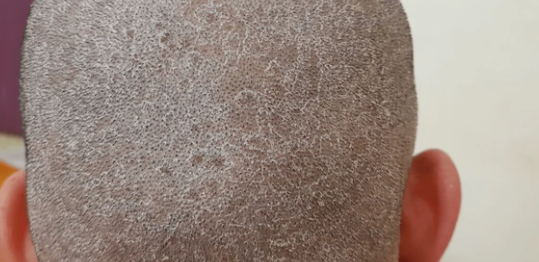
Tinea Capitis Explained: Hair Loss, Healing, and the Role of Wigs
Share
Tinea capitis, also known as scalp ringworm, is a fungal infection that affects the scalp and hair shafts. Despite its nickname, it isn’t caused by a worm. it’s caused by a type of fungus known as a dermatophyte. This condition is most common in children, but it can affect people of all ages.
One of the most visible and distressing symptoms of tinea capitis is hair loss. The infection often causes round patches of baldness, itching, scaling, and sometimes swelling or black dots where hairs have broken off at the scalp. In more severe cases, the scalp can develop painful, inflamed sores called kerions, which can lead to scarring and permanent hair loss if not treated early.
Treatment for tinea capitis typically involves oral antifungal medications, as topical treatments usually aren’t enough to penetrate the hair shaft. Alongside medication, good hygiene practices like not sharing combs, hats, or pillows are crucial to prevent spreading the infection to others or reinfecting yourself.
For those experiencing visible hair loss, especially children or teens, the emotional impact can be significant. That’s where wigs can offer more than just coverage. They can restore confidence and help maintain a sense of normalcy during treatment.
Wigs today are incredibly realistic and comfortable. For children and adults alike, there are breathable options made from synthetic or natural hair that won’t irritate sensitive scalps. Some organizations even provide wigs for free or at a reduced cost to individuals dealing with medical hair loss. Parents can involve their children in choosing the wig style or color to make it a fun and empowering experience.
Wearing a wig doesn't just mask the effects of tinea capitis, it provides a temporary solution that supports emotional healing. As treatment takes effect and the scalp recovers, hair often regrows, and the wig can be set aside. In cases where hair loss becomes permanent, wigs remain a reliable and stylish option for everyday wear.
If you or a loved one is dealing with tinea capitis, know that with proper care, the condition is treatable and help, both medical and emotional, is available.
Let me know if you'd like a version tailored for kids, wig-shopping guide, or a caregiver support article to pair with this.
